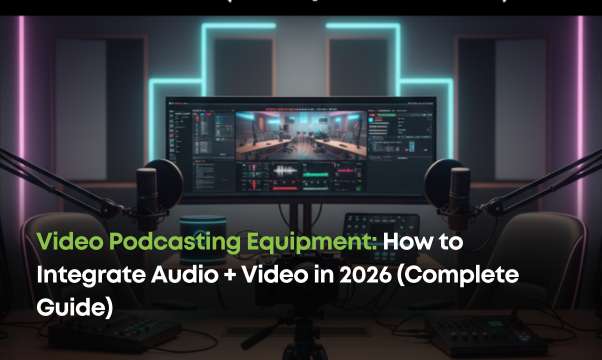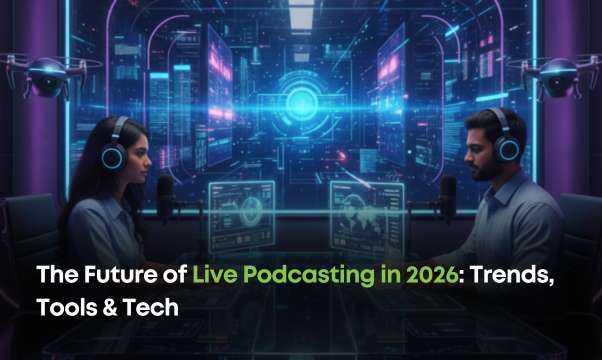How Lecture Transcription Supports Diverse Learners in Hybrid Classrooms
Nov 21, 2025, Nishi SinghLecture transcription enhances accessibility, comprehension, and student retention in hybrid classrooms by supporting diverse learners - including students with hearing impairments, neurodivergent students, ESL learners, and those with different learning preferences. It provides accurate, searchable text versions of lectures, reduces cognitive load, and enables flexible study for students balancing academic and personal responsibilities. Combining AI transcription tools with human-verified accuracy ensures universities deliver inclusive, equitable, and accessible learning environments.
Why Transcription Matters in Hybrid Learning
Imagine a university seminar where half the students sit in a classroom and the rest join online. The challenge is immediate and obvious:
How do you ensure every student - regardless of location, ability, or learning style - receives the same high-quality educational experience?
Hybrid classrooms are now the norm, but inclusivity has not always kept pace. One tool that solves this accessibility gap is lecture transcription. More than simply turning speech into text, transcription enables equal access to information, reduces stress for students, and supports institutional accessibility requirements.
This article explores how transcription fundamentally improves hybrid learning and supports diverse learners.
How Lecture Transcription Bridges the Gap for Diverse Learners
1. Accessibility for Students with Hearing Impairments
Students who are deaf or hard of hearing often struggle with real-time lectures - especially in hybrid setups where audio quality can vary dramatically.
How Transcription Helps
Provides real-time or post-lecture text to follow along without relying on lip-reading
Creates an accurate written record for review
Reduces participation barriers
Supports ADA, WCAG 2.2, and Section 508 accessibility standards
Example:
A hearing-impaired student like Leo no longer needs to strain or fear missing critical information. With a transcript on hand, he reviews concepts confidently and participates fully in class discussions.
2. Empowering Neurodivergent Learners (ADHD, Dyslexia, Processing Disorders)
Long lectures can overwhelm students who have difficulty sustaining attention or processing auditory information.
How Transcription Helps
Acts as a safety net for missed content
Reduces anxiety around note-taking
Enables keyword search for quick review
Supports study methods aligned with individual learning styles
Students with dyslexia benefit tremendously from having clear, structured text - rather than struggling with handwritten notes or replaying lectures multiple times.
3. Supporting ESL and International Students
Fast speech, accents, and academic jargon can make comprehension difficult for non-native English speakers.
How Transcription Helps
Allows learning at a self-paced rhythm
Enables vocabulary lookup and grammar reinforcement
Improves comprehension and confidence
Serves as a bridge between language learning and academic content
This levels the playing field and prevents language from becoming a barrier to academic success.
How Transcription Enhances Learning for All Students
From Passive Listening to Active Studying
Traditional note-taking divides student attention. With transcripts available, students can:
Engage more actively in discussions
Listen with full focus
Annotate transcripts after class
Build flashcards, summaries, and study guides
This shift results in deeper comprehension and better retention.
Flexible Learning for Busy Students
Students today juggle academic work, jobs, family responsibilities, and health challenges.
Transcription ensures they never fall behind because:
Missed classes can be reviewed fully
Difficult sections can be re-read
Studying becomes portable and flexible
This flexibility is essential in hybrid environments.
Key Benefits of Lecture Transcription in Hybrid Classrooms
Provides accessibility for hearing-impaired students
Supports neurodivergent learners with ADHD or dyslexia
Enhances understanding for ESL students
Improves note-taking accuracy
Enables keyword-searchable learning
Supports accessibility compliance
Enhances engagement and long-term retention
Helps students review missed classes effectively
Who Benefits Most from Lecture Transcription?
Students with hearing impairments
Students with ADHD, dyslexia, or auditory processing issues
ESL and international students
Students with limited internet connectivity
Visual learners who prefer text
Working students or caregivers needing flexible learning
Any student who wants better revision tools
AI vs Human Transcription: Which Is Better for Education?
Conclusion:
AI is great for speed, but human transcription ensures academic precision and context - making it essential for hybrid classrooms and technical subjects.
Real-World Use Cases
For Professors
Reduce repeated explanations
Provide more inclusive learning materials
Support students reviewing complex subjects
For Students
Quickly search for terms, formulas, or key ideas
Create highlights, annotations, and summaries
Use transcripts for exam prep and long-term retention
For Institutions
Meet accessibility compliance requirements
Improve student outcomes and satisfaction
Demonstrate commitment to inclusive education
Choosing the Right Classroom Transcription Tools
Effective transcription requires reliable tools. Options include:
AI-powered live transcription for immediate captions
Human transcription services for polished academic accuracy
myTranscriptionPlace combines speed and high accuracy, offering educators and institutions dependable transcripts suitable for hybrid teaching needs.
Conclusion: Building Inclusive and Effective Hybrid Classrooms
Hybrid learning presents both opportunities and challenges. Lecture transcription is one of the most impactful, cost-effective tools for creating equitable learning environments.
It:
Boosts accessibility
Improves comprehension
Enhances engagement
Supports diverse learning needs
Provides flexibility and reliability
Strengthens institutional inclusivity
As universities seek to deliver fair, accessible education, transcription is no longer optional - it is essential.
myTranscriptionPlace supports institutions worldwide with accurate, timely, and professionally formatted transcription and translation services, helping educators create the inclusive hybrid classrooms students deserve.
Our Popular Services
Human Transcription | Automatic Transcription | Interactive Transcription | Human Translation | Spanish Transcription | Focus Group Transcription Services | Qualitative Data Analysis | Medical Transcription Services | Technical Translation Services | Closed Captioning Services | Accurate Transcription Services | Video Transcription Services.






